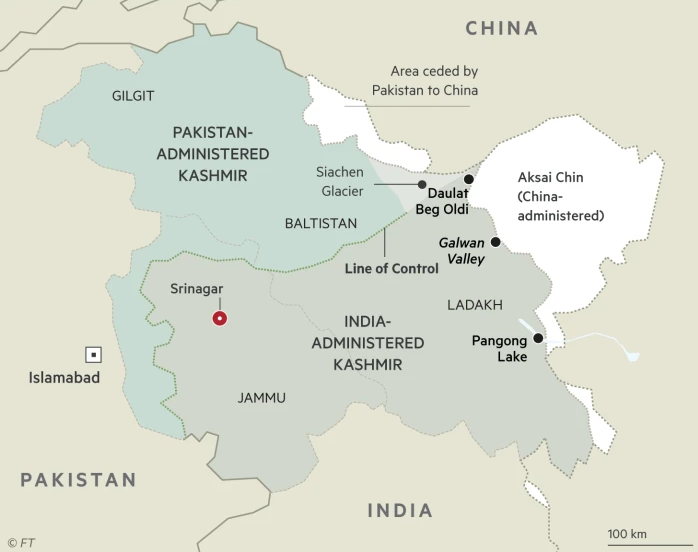World

Topless sunbathing defended by French Minister
France's interior minister has defended topless sunbathing after police asked a group of women on a Mediterranean beach to cover up.
The three were approached by officers on the beach in Sainte-Marie-La-Mer following a complaint from a holidaying family.
The incident generated a huge backlash against the officers.
Backing the women, the minister, Gérald Darmanin, tweeted: "Freedom is a precious commodity".
He said it was wrong the women were asked to put on clothing.
A press release posted on Facebook by the Pyrenees-Orientales police said the incident happened last week.
Two officers asked three people on the beach to cover their chests, after a request from a family concerned about children present.
"Guided by a desire for appeasement, the police asked the people concerned if they would agree to cover their chest after they explained the reason for their approach," it said.
"No municipal order forbids this practice [topless sunbathing] in Sainte-Marie-la-Mer."
Their action prompted a wave of criticism online. Some questioned a wave of "prudishness" sweeping France, while others questioned if the practice was now banned. (BBC)
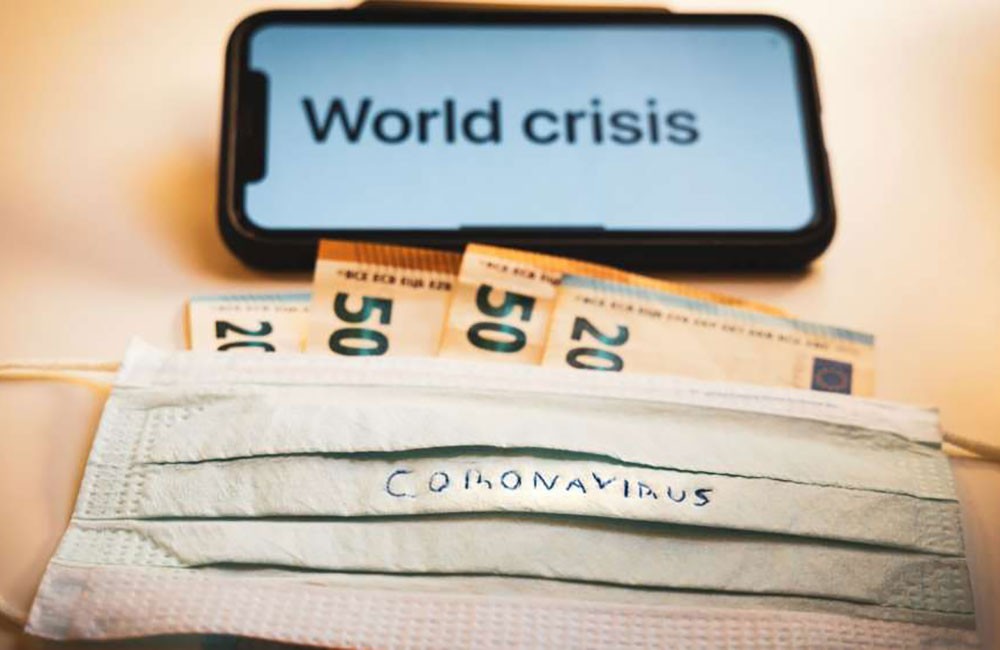
WHO reports another record jump in daily global cases
The biggest increases were from the United States, Brazil, India and South Africa, according to a daily report. The previous WHO record for new cases was 228,102 on July 10. Deaths remained steady at about 5,000 a day.
UK death toll up by 21
The United Kingdom's death toll from confirmed cases of Covid-19 rose to 44,819, up by 21 from the previous day, the government has said.
Iran reports 194 more fatalities
Iran has confirmed 194 more fatalities from the novel coronavirus, bringing the nationwide death toll to 12,829. A further 2,186 people tested positive for Covid-19, raising the overall count to 252,720, Health Ministry spokeswoman Sima Sadat Lari said.
She added that a total of 219,993 people have so far recovered and been discharged from hospitals, adding that 3,359 patients remain in critical condition.
Sri Lanka cancels election rallies over new virus wave
Sri Lanka's ruling party has called off its rallies ahead of upcoming parliamentary elections and delayed the international airport's reopening over a surge in virus cases.
The island nation of 21 million lifted its coronavirus lockdown in late June after declaring there was no longer any community spread of the virus.
But a swathe of cases emerged last week, including an outbreak at a drug rehabilitation centre last week that saw 253 patients test positive in a single night.
Pakistan reports 2,521 infections and additional 74 fatalities, bringing the total in the country to 248,872 cases and 5,197.
The Asian country with 212 million residents has conducted 1,562,638 tests by now.
Trump wears mask first time in public
US President Donald Trump, who has avoided wearing a mask in public even as the coronavirus pandemic spread, donned one at a military medical facility outside Washington where he was to meet with wounded soldiers and front-line health-care workers.
The visit to Walter Reed National Military Medical Center on Saturday marked Trump's first public appearance with a face covering since the virus began sweeping across the United States earlier this year.

TikTok to launch legal action against Trump over ban
Chinese video app TikTok is set to launch legal action to challenge a ban imposed by US President Donald Trump.
Mr Trump's executive order prohibits transactions with TikTok's owner ByteDance from mid-September.
Officials in Washington are concerned that the company could pass data on American users to the Chinese government, something ByteDance has denied doing.
The short video-sharing app has 80 million active US users.
TikTok says it has tried to engage with the Mr Trump's administration for nearly a year but has encountered a lack of due process and an administration that pays "no attention to facts".
"To ensure that the rule of law is not discarded and that our company and users are treated fairly, we have no choice but to challenge the executive order through the judicial system," a company spokesperson said.
TikTok expects the legal action to begin this week, says BBC Business reporter Vivienne Nunis.
On Friday a group of Chinese-Americans filed a separate lawsuit against the president's similar ban on the social media app WeChat, which is owned by the Chinese firm, Tencent.
TikTok's users post short video clips on the platform on topics ranging from dance routines to international politics. Its popularity exploded in recent months particularly with teenagers and it has been downloaded more than a billion times around the world.
But Mr Trump claims China is able to use the app to track the locations of federal employees, collect information for use in blackmail, or spy on companies.
The growth of mobile apps developed and owned by Chinese firms "threatens the national security, foreign policy, and economy of the United States", Mr Trump says.
"This data collection threatens to allow the Chinese Communist Party access to Americans' personal and proprietary information," he claims in his executive order.
TikTok says it has never handed over any US data user to Chinese authorities.
Mr Trump's actions against TikTok and WeChat are the latest in a growing campaign against China ahead of the US presidential election in November.
Since taking office he has been waging a trade war against China.
The US is not the only country to introduce blocks on TikTok. India has banned use of the app, and Australia is also considering taking action.
The app is viewed by some as being a key instrument in China's internal surveillance apparatus - requiring local users who have been accused of spreading malicious rumours to register a facial scan and voice print.
WeChat is very popular with users who have connections to China, where major social networking platforms - such as WhatsApp and Facebook - are blocked.
"Having it suddenly cut off would be disastrous and frightening for people, especially in the pandemic," said lawyer Michael Bien, who's representing those challenging President Trump's ban.
He said the executive order is unconstitutional, because it violates users' rights to free speech.
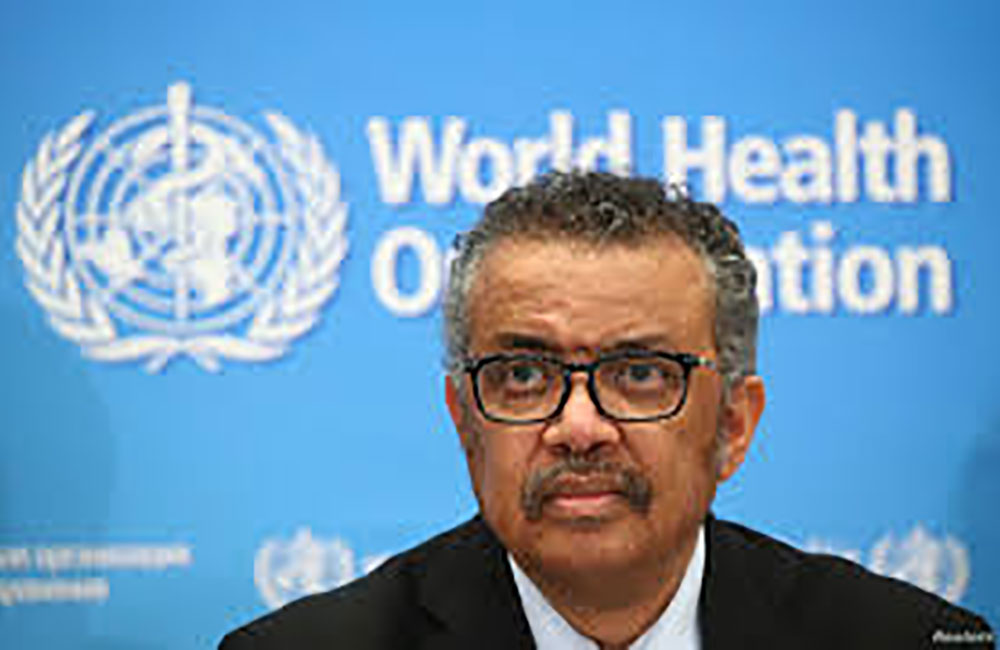
Lack of global leadership a bigger threat than COVID-19: WHO Chief
"My friends, make no mistake: the greatest threat we face now is not the virus itself," Tedros Adhanom Ghebreyesus said in a passionate speech in Geneva on Friday. "Rather, it's the lack of leadership and solidarity at the global and national levels."
His intervention will be seen as a thinly veiled swipe at leaders including US President Donald Trump, who has waged a public battle against WHO while failing to suppress the world's worst COVID-19 outbreak in his own country.
"This is a tragedy that is forcing us to miss many of our friends, losing many lives. We cannot defeat this pandemic as a divided world," Mr Tedros said, his voice trembling as he spoke.
The US is regularly reporting single-day record rises in cases and topped three million confirmed infections earlier this week, throwing its early attempts to reopen the economy into chaos. The situation is almost as bleak in other regions. Brazil's President, Jair Bolsonaro, has contracted COVID-19 after playing down its severity for months.
India announced its biggest single-day rise in cases on Thursday, and the spread of the virus is picking up pace in Mexico.
Australia, hailed as an early success story in the fight against the pandemic, has been forced to seal off more than six million people in the state of Victoria after a renewed surge in the disease in Melbourne.
"How is it difficult for humans to unite to fight a common enemy that's killing people indiscriminately?" Mr Tedros asked during his plea, made during a WHO meeting.
"Are we unable to distinguish or identify the common enemy? Can't we understand that the divisions or the cracks between us actually are the advantage for the virus?" He urged a coming-together of global powers, telling attendees: "COVID-19 is a test of global solidarity and global leadership".
Mr Tedros' words come days after the Trump administration told Congress and the United Nations that the US is formally withdrawing from WHO.
The withdrawal, which goes into effect in July next year, has drawn criticism from bipartisan lawmakers, medical associations, advocacy organisations and allies abroad. Presumptive Democratic presidential nominee Joe Biden vowed Tuesday to reverse the decision "on (his) first day" if elected.
Mr Tedros himself has drawn the ire of the US President, who has accused the organisation of being too China-centric and failing to contain the pandemic in its early days. But the leaders of virtually every other major nation, including Germany, France and the UK, have stood by the agency during the crisis.
And on Thursday, German Chancellor Angela Merkel said the pandemic has exposed the dangers of "fact-denying populism" around the world. "We have seen lies and disinformation, and that is no way to fight the pandemic," she told the European Parliament in Brussels. (AP)
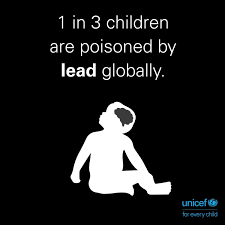
A third of world’s children poisoned by lead: UNICEF
Lead poisoning is affecting children on a “massive and previously unknown scale”, according to a ground-breaking new study launched on Thursday by the United Nations Children’s Fund (UNICEF) and international non-profit organization focused on pollution issues, Pure Earth.

Coronavirus: Worst could be yet to come, WHO warns
WHO head Tedros Adhanom Ghebreyesus said the virus would infect many more people if governments did not start to implement the right policies.
His message remained "Test, Trace, Isolate and Quarantine", he said.
More than 10m cases have been recorded worldwide since coronavirus emerged in China late last year.
The number of patients who died is now above 500,000. Half the world's cases have been in the US and Europe but Covid-19 is rapidly growing in the Americas.
The virus is also affecting South Asia and Africa, where it is not expected to peak until the end of July.
Dr Tedros told a virtual briefing on Monday: "We all want this to be over. We all want to get on with our lives. But the hard reality is this is not even close to being over.
"Although many countries have made some progress, globally the pandemic is actually speeding up."
"With 10 million cases now and half a million deaths, unless we address the problems we've already identified at WHO, the lack of national unity and lack of global solidarity and the divided world which is actually helping the virus to spread... the worst is yet to come," he said.
"I'm sorry to say that, but with this kind of environment and conditions we fear the worst."

Afghan teen girl kills Taliban militants who killed her parents
The Taliban came to the house because the girl's father was a government supporter, they added.A photo of the girl holding the gun has gone viral in recent days.
 Later more militants came to attack the house, in the village of Griwa, but were beaten back by villagers and pro-government militia.
Later more militants came to attack the house, in the village of Griwa, but were beaten back by villagers and pro-government militia.
Officials said the girl, believed to be aged between 14 and 16, and her younger brother had been taken to a safer place.
Social media users praised the teenager.
"Hats off to her courage," AFP quoted Najiba Rahmi as saying on Facebook.
"We know parents are irreplaceable, but your revenge will give you relative peace," said Mohamed Saleh, also on Facebook.
According to local media, Ghor is one of the most underdeveloped western provinces of Afghanistan and incidences of violence against women are high. The Taliban signed a peace deal with the US in February but many of its members continue to call for the overthrow of the current Afghan government and constitution.

Brutal details emerge of deadly China-India border clash
Indian media reported that the battle was fought in darkness on a narrow ridge overlooking the Galwan Valley in the Himalayas — more than 14,000 feet above sea level — after Indian troops tried to verify that Chinese soldiers had honoured a pledge to withdraw from a strategic position.
Scuffles broke out and in the violent melee some Indian soldiers plunged from the ridge into the ravine below, according to Indian media. The clash involved hand-to-hand combat and improvised weapons because firearms are prohibited in the disputed zones under a protocol intended to prevent an inadvertent escalation of violence.
While Beijing has not confirmed any details of the confrontation, Indian media reported that the Chinese military also suffered many casualties.
Before Monday’s fight erupted, the two nuclear armed neighbours had been discussing a mutual disengagement from a weeks-long stand-off at multiple points along the disputed 3,488km border.
With tensions running high along the “line of actual control”, China’s foreign minister Wang Yi and his Indian counterpart S Jaishankar held phone talks on Wednesday aimed at preventing further violence.
The Chinese foreign ministry said both sides agreed to “cool down the situation,” while India’s foreign ministry said they had agreed “neither side would take any action to escalate matters”.
Disputed Territory
But Mr Jaishankar also accused Chinese troops of seeking to erect a structure in the valley “on our side of the line of actual control,” New Delhi said. China’s action “was directly responsible for the resulting violence and casualties,” he said, according to Indian officials.
Beijing reiterated its position that Indian troops had crossed into Chinese territory and “provoked” the clash. “India should not misjudge the current situation or underestimate China’s determination to safeguard territorial sovereignty,” Mr Wang said, according to China’s foreign ministry.
Tensions over the undemarcated border have simmered since China and India fought a fully fledged war in 1962. But despite occasional flare-ups — including violent brawls and confrontations between rival border patrols — the conflict has not led to any fatalities since 1975.
In his first public comments on the clash, Narendra Modi, India’s prime minister, said the Indian soldiers would not die in vain. “India wants peace but if provoked it is capable of giving a befitting reply,” he said in a statement.
China’s reaction to the confrontation was restrained. State media ran only a brief military statement confirming that there had been casualties but providing no further details. Chinese social media reaction also remained muted.
However, the editor of a nationalist tabloid mocked India’s military on Twitter, after reports suggested that most of its fatalities died from exposure in the sub-zero temperatures rather than injuries from the fight.
“This is not an army with real modern combat capabilities at [altitude]. Indian public opinion needs to stay sober,” said Hu Xijin at the Global Times.
But Indian public anger towards China was mounting on Wednesday, with protests outside Beijing’s embassy in New Delhi. Indian social media also reverberated with calls for a boycott of Chinese goods.
Bilahari Kausikan, a former diplomat now at the National University of Singapore, said such sentiments could make it difficult for Mr Modi and Chinese President Xi Jinping to rein in tempers.
“Both Modi and Xi have used nationalist narratives, so even if they want to de-escalate public sentiment could make that difficult,” Mr Kausikan said.
“Neither of them is looking for more trouble but it will depend on whether they can contain social media reaction.”
Since taking power in 2014, Mr Modi has tried to forge an amicable working relationship with Mr Xi. Some analysts, however, say Beijing has been irked by New Delhi’s warm ties with US president Donald Trump.
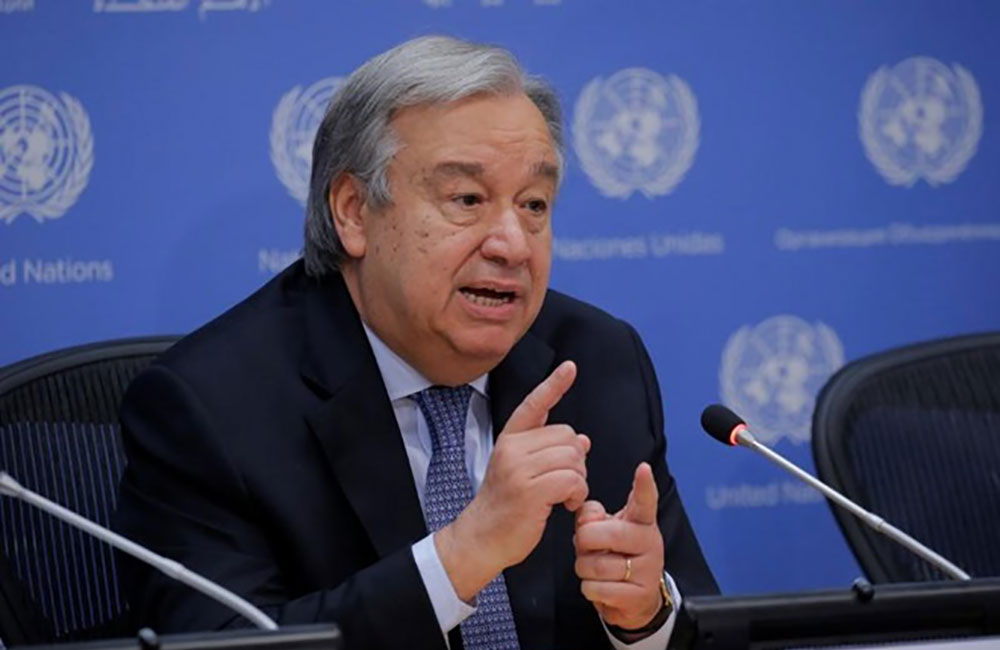
‘Inequality defines our time’: UN Secretary General
Guterres made these remarks while he was delivering the 2020 Nelson Mandela Annual Lecture, held online for the first time, in light of the ongoing COVID-19 pandemic. The lecture series, held annually by the Nelson Mandela Foundation, on the birthday of the first democratically-elected President of South Africa, aims to encourage dialogue by inviting prominent personalities to discuss major international challenges.
COVID-19 Spotlight!
Global risks ignored for decades – notably inadequate health systems, gaps in social protection, structural inequalities, environmental degradation, and the climate crisis – have been laid bare, he said. The vulnerable are suffering the most: those living in poverty, older people, and people with disabilities and pre-existing conditions.
Mr. Guterres pointed out that inequality takes many forms. Whilst income disparity is stark, with the 26 richest people in the world holding as much wealth as half the global population, it is also the case that life-chances depend on factors such as gender, family and ethnic background, race and whether or not a person has a disability.
However, he noted that everyone suffers the consequences, because high levels of inequality are associated with “economic instability, corruption, financial crises, increased crime and poor physical and mental health.”
The legacy of colonialism and patriarchy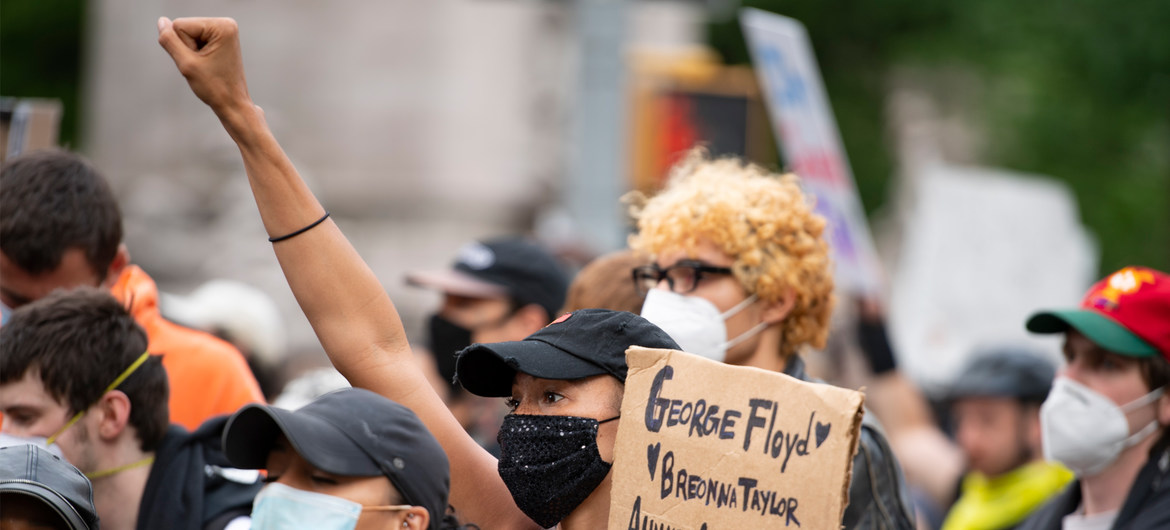 UN Photo/Evan Schneider. Protests have been occurring daily in New York City against racism and police violence, following the death of George Floyd.
UN Photo/Evan Schneider. Protests have been occurring daily in New York City against racism and police violence, following the death of George Floyd.
Colonialism, a historic aspect of inequality, was evoked by the Secretary-General. Today’s anti-racist movement, he said, points to this historic source of inequality: “The Global North, specifically my own continent of Europe, imposed colonial rule on much of the Global South for centuries, through violence and coercion.”
This led to huge inequalities within and between countries, including the transatlantic slave trade and the apartheid regime in South Africa, argued Mr. Guterres, and left a legacy of economic and social injustice, hate crimes and xenophobia, the persistence of institutionalized racism, and white supremacy.
Mr. Guterres also referred to patriarchy, another historic inequality which still resonates: women everywhere are worse off than men, and violence against women is, he said, at epidemic levels.
The UN chief, who described himself as a proud feminist, said he was committed to gender equality, and has made gender parity a reality across senior UN posts. He also announced his appointment of South African international rugby captain, Siya Kolisa, as a global champion for the Spotlight Initiative, which aims to engage men in fighting violence against women and girls.
‘Everyone must pay their fair share’ of tax
Turning to contemporary inequality, Mr. Guterres said that the expansion of trade, and technological progress, have contributed to “an unprecedented shift in income distribution”. Low-skilled workers are bearing the brunt, he warned, and face an “onslaught” from new technologies, automation, the offshoring of manufacturing and the demise of labour organizations.
Meanwhile, he continued, widespread tax concessions, tax avoidance and tax evasion, as well as low corporate tax rates, mean that there are reduced resources for social protection, education, and healthcare - services that play an important part in reducing inequality.
Some countries have allowed the wealthy and well-connected to benefit from tax systems, but “everyone must pay their fair share”, said Mr. Guterres, and governments need to tackle the “vicious cycle” of corruption, which weakens social norms and the rule of law, and shift the tax burden from payrolls to carbon, which would help to address the climate crisis.
A New Global Deal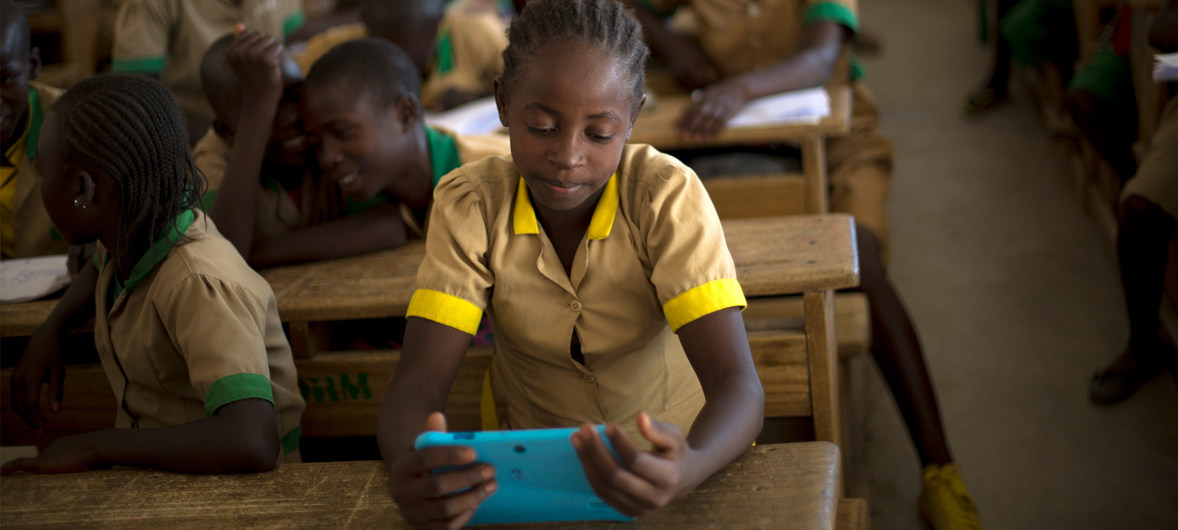
UNICEF/UN0143514/Karel Prinsloo. A student learns with the help of a computer tablet provided by UNICEF at a school in Baigai, northern Cameroon, Tuesday 31 October 2017.
Although climate change is a global problem, the effects are felt most keenly by those countries which are least to blame. The issue is likely to become more pronounced in the coming years, and millions risk malnutrition, malaria and other diseases; forced migration, and extreme weather events.
The only way towards a fair and sustainable future for all, he suggested, involves what he called a “New Social Contract”, which allows young people to live in dignity; women to have the same prospects and opportunities as men; and protects the vulnerable, and a “New Global Deal”, which ensures that power, wealth and opportunities are shared more broadly and fairly at the international level.
As part of the New Social Contract, labour market policies would be based on constructive dialogue between employers and workers, and would ensure human rights and fundamental freedoms.
The Secretary-General called for new social safety nets, including universal health coverage, the possibility of universal basic income, boosted investment in public services, and, to reverse long-standing inequalities, affirmative action programmes and other policies to address inequalities in gender, race or ethnicity.
The UN chief explained that quality education for all, and the effective use of digital technology, will be crucial to achieving these aims.
This would mean doubling education spending in low and middle-income countries by 2030 to $3 trillion a year: within a generation, all children in low- and middle-income countries could have access to quality education at all levels.
Governments also need to transform the way children are taught, said Mr. Guterres, and invest in digital literacy and infrastructure, and help them to prepare for a rapidly changing workplace that is being upended by technology.
The Secretary-General outlined some of the ways that the UN is supporting these efforts, including The Roadmap for Digital Cooperation, launched at the United Nations in June, which promotes ways to connect four billion people to the Internet by 2030, and “Giga”, an ambitious project to get every school in the world online.
‘We stand together, or we fall apart’
The UN chief ended his major strategic vision statement, by invoking the importance of international cooperation and solidarity. “We belong to each other”, he said. “We stand together, or we fall apart”.
The world, he concluded, is at breaking point, and it is time for leaders to decide which path to follow. The choice presented by Mr. Guterres, is between “chaos, division and inequality”, or righting the wrongs of the past and moving forward together, for the good of all.
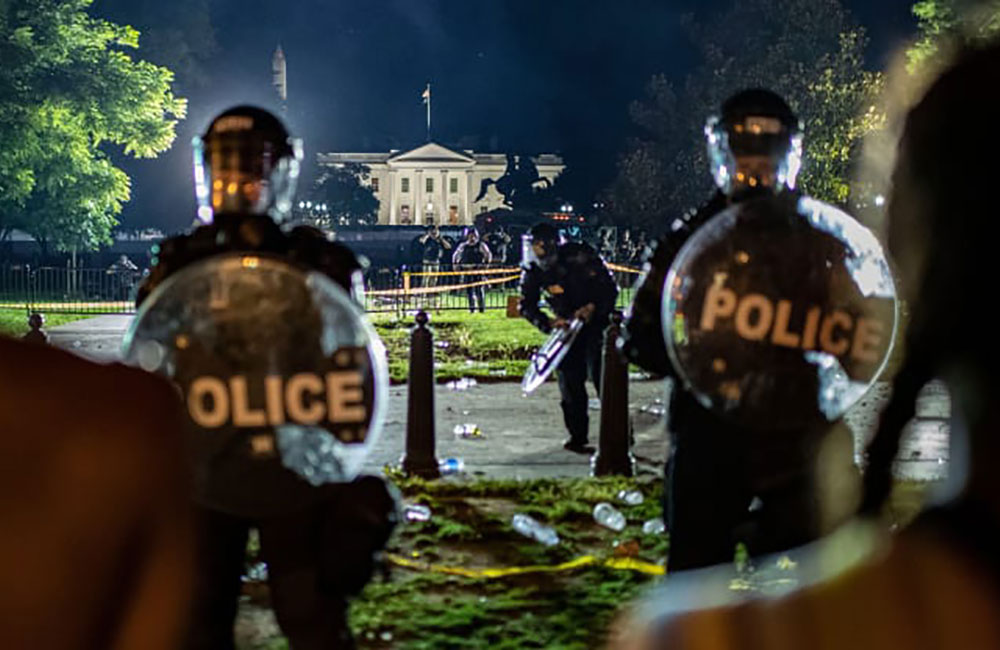
USA crisis deepens as protests erupt over police brutality
Hundreds of people were arrested over the weekend as protesters and police clashed in cities across America after the killing of George Floyd, an unarmed black man, at the hands of Minneapolis police sparked more than 100 protests, rallies and vigils, according to NBC News.
Mayors of major cities from Los Angeles to Philadelphia to Atlanta imposed curfews and at least 12 states, as well as Washington, D.C., activated National Guard troops in an effort to keep the peace, but protests in several cities descended into violence again as tensions boiled over.

Demonstrators confront secret service police and Park police officers outside of the White House on May 30, 2020 in Washington DC, during a protest over the death of George Floyd, an unarmed black man, who died after a Minneapolis police officer kneeled on his neck for several minutes. Eric Baradat | AFP | Getty Images
Derek Chauvin, the officer filmed kneeling on Floyd’s neck, was arrested and charged with murder and manslaughter.
The social unrest over police brutality comes in the midst of the ongoing coronavirus pandemic, which has killed more than 100,000 Americans and led to the worst unemployment since the Great Depression. The unemployment rate hit 14.7% in April, a post-WWII record, and is likely to rise above 20%.
The black community has been hit disproportionately hard by Covid-19. Nearly 23% of all deaths from the pandemic are African American even though black people make up about 13% of the U.S. population, according to the Centers for Disease Control and Prevention.
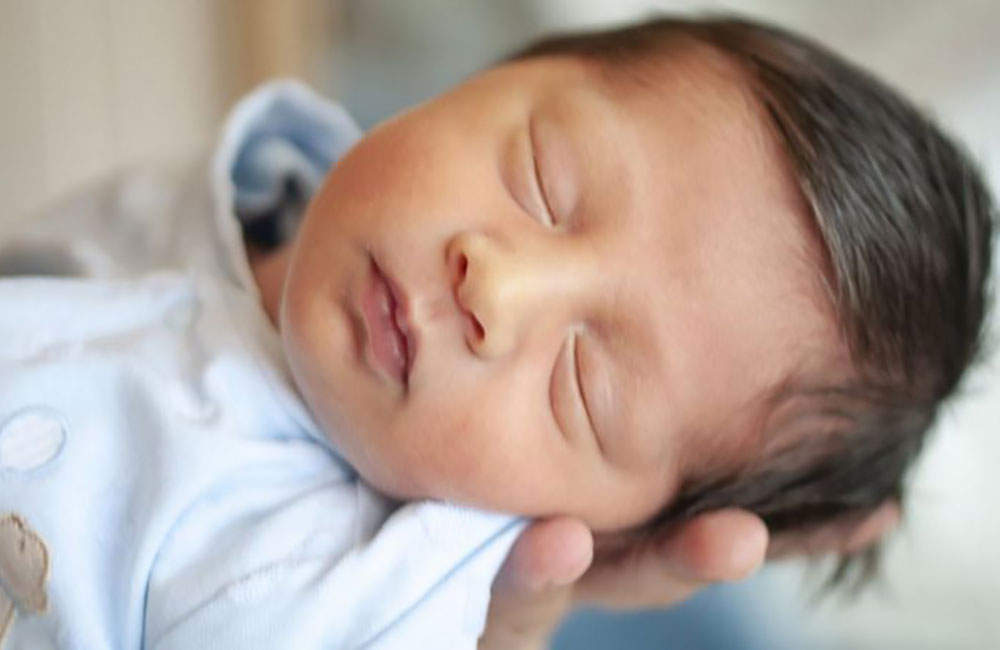
Fertility rate: 'Jaw-dropping' global crash in children being born
Falling fertility rates mean nearly every country could have shrinking populations by the end of the century. And 23 nations - including Spain and Japan - are expected to see their populations halve by 2100. Countries will also age dramatically, with as many people turning 80 as there are being born.
The fertility rate - the average number of children a woman gives birth to - is falling. If the number falls below approximately 2.1, then the size of the population starts to fall.
In 1950, women were having an average of 4.7 children in their lifetime.
Researchers at the University of Washington's Institute for Health Metrics and Evaluation showed the global fertility rate nearly halved to 2.4 in 2017 - and their study, published in the Lancet, projects it will fall below 1.7 by 2100.
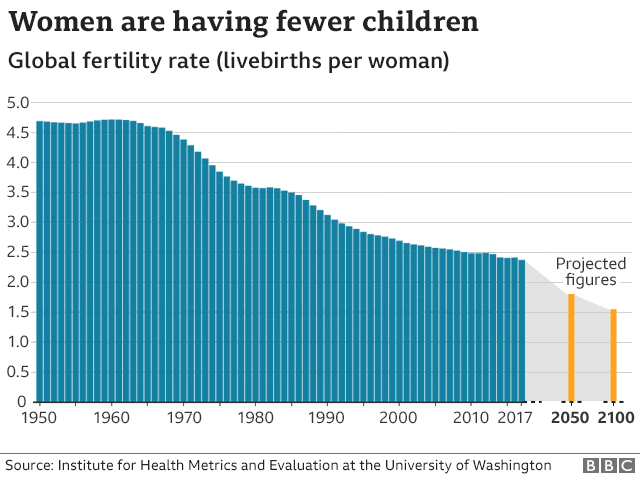
"That's a pretty big thing; most of the world is transitioning into natural population decline," researcher Prof Christopher Murray told the BBC.
"I think it's incredibly hard to think this through and recognise how big a thing this is; it's extraordinary, we'll have to reorganise societies."
Why are fertility rates falling?
It has nothing to do with sperm counts or the usual things that come to mind when discussing fertility.
Instead it is being driven by more women in education and work, as well as greater access to contraception, leading to women choosing to have fewer children. In many ways, falling fertility rates are a success story.
Japan's population is projected to fall from a peak of 128 million in 2017 to less than 53 million by the end of the century.
Italy is expected to see an equally dramatic population crash from 61 million to 28 million over the same timeframe.
They are two of 23 countries - which also include Spain, Portugal, Thailand and South Korea - expected to see their population more than halve.
"That is jaw-dropping," Prof Christopher Murray told me.
China, currently the most populous nation in the world, is expected to peak at 1.4 billion in four years' time before nearly halving to 732 million by 2100. India will take its place.
The UK is predicted to peak at 75 million in 2063, and fall to 71 million by 2100.
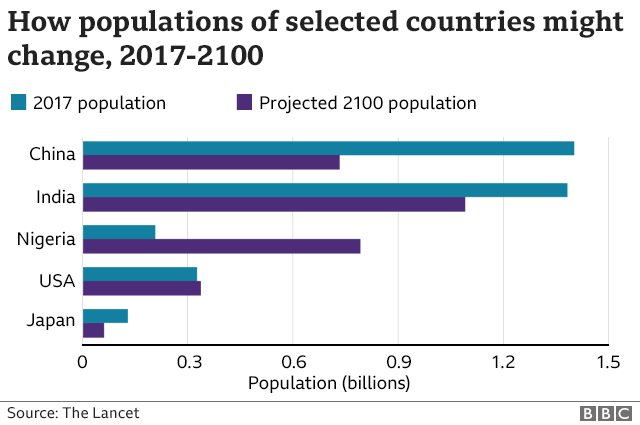
Why is this a problem?
You might think this is great for the environment. A smaller population would reduce carbon emissions as well as deforestation for farmland.
"That would be true except for the inverted age structure (more old people than young people) and all the uniformly negative consequences of an inverted age structure," says Prof Murray.
The study projects:
- The number of under-fives will fall from 681 million in 2017 to 401 million in 2100.
- The number of over 80-year-olds will soar from 141 million in 2017 to 866 million in 2100.
Prof Murray adds: "It will create enormous social change. It makes me worried because I have an eight-year-old daughter and I wonder what the world will be like."
Who pays tax in a massively aged world? Who pays for healthcare for the elderly? Who looks after the elderly? Will people still be able to retire from work?
"We need a soft landing," argues Prof Murray.
Are there any solutions?
Countries, including the UK, have used migration to boost their population and compensate for falling fertility rates.
However, this stops being the answer once nearly every country's population is shrinking.
"We will go from the period where it's a choice to open borders, or not, to frank competition for migrants, as there won't be enough," argues Prof Murray.
Some countries have tried policies such as enhanced maternity and paternity leave, free childcare, financial incentives and extra employment rights, but there is no clear answer.
Sweden has dragged its fertility rate up from 1.7 to 1.9, but other countries that have put significant effort into tackling the "baby bust" have struggled. Singapore still has a fertility rate of around 1.3.
Prof Murray says: "I find people laugh it off; they can't imagine it could be true, they think women will just decide to have more kids.
"If you can't [find a solution] then eventually the species disappears, but that's a few centuries away."
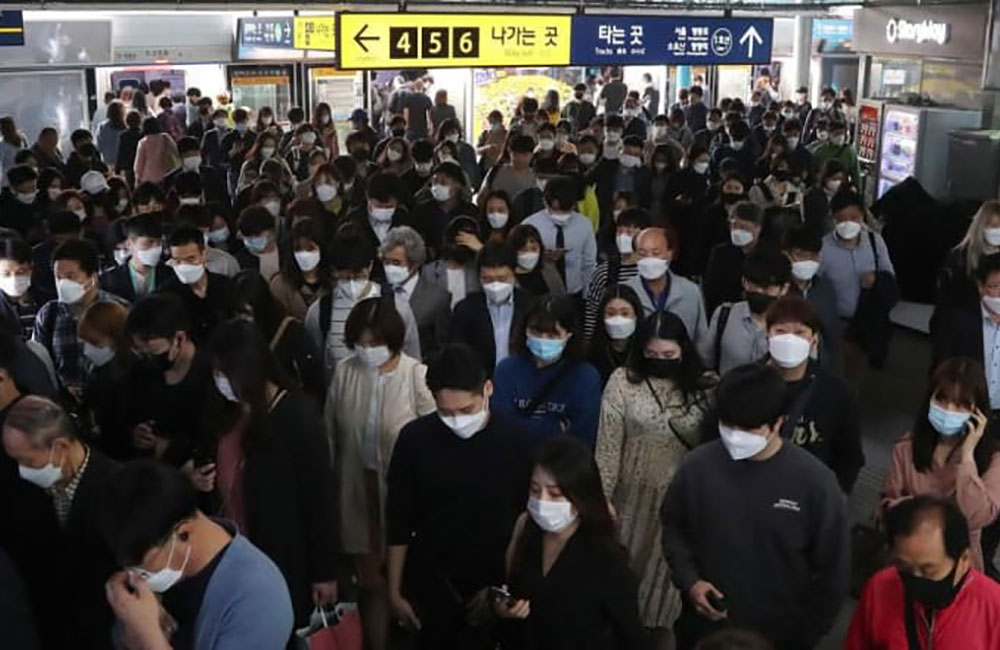
South Korea fears second wave of Covid-19
South Korea has reported its biggest spike in coronavirus cases in nearly two months, as officials scramble to tackle fresh clusters that have raised concerns of a possible second wave of infections.
The country has been held up as a global model in how to curb the virus and has begun to ease restrictions, but is now rushing to contain new infections as life returns to normal.
Officials announced 79 new cases - taking its total to 11,344 - with most fresh infections from the densely populated Seoul metropolitan area.
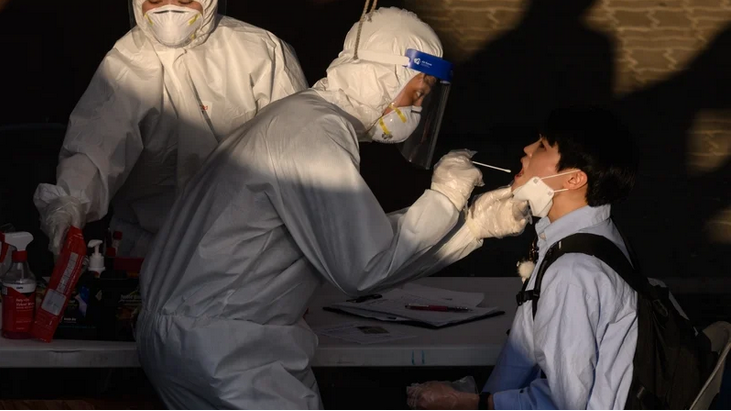 A health worker administers a swab at a temporary testing centre in Bucheon, where there has been an outbreak
A health worker administers a swab at a temporary testing centre in Bucheon, where there has been an outbreak
Around 4,100 workers and visitors to the building were under self-isolation, with more than 80% tested so far, a health minister told reporters.
"We are expecting the number of new cases linked to the warehouse to continue rising until today as we wrap up related tests," he added.
Social distancing rules have been relaxed in South Korea and facilities such as museums and churches have reopened.
Some professional sports - including baseball and soccer - started new seasons earlier this month, albeit behind closed doors.
Students have been returning to classes since last week, although some schools were forced to turn away their pupils over concerns of new virus cases in their neighbourhood.
The country endured one of the worst early outbreaks of the disease outside mainland China, and while it never imposed a compulsory lockdown, strict social distancing had been widely observed since March.
But it appears to have brought its outbreak under control thanks to an extensive "trace, test and treat" programme.
Page 10 of 41
